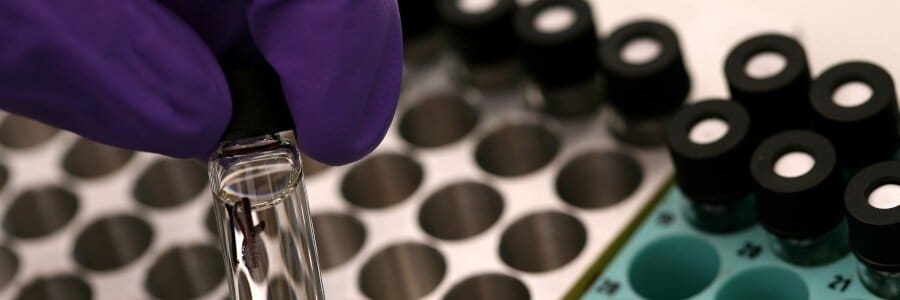Measuring Lubricant Cleanliness with Particle Counting

Examining a lubricant’s cleanliness can tell you a lot. Microscopic particulate matter found in a sample of oil is an indicator not only of the health of the fluid, but of the overall condition of the mechanical system around it. Analyzing and quantifying fluid cleanliness can help prolong component life or warn of imminent failure. It is an essential part of any maintenance program.
In an earlier posting, we discussed particle counting as the most common and effective test for measuring lubricant cleanliness. However, there are several ways to count and measure the size of particles, each requiring special equipment and each with its own advantages and limitations. In our new white paper on Particle Counting Methodologies, we explore the variety of techniques available to determine a quantitative value for fluid cleanliness. Let’s summarize them briefly.
Optical Particle Counting
Light Extinction: Optical particle counters are the most common instruments in use, and light extinction or laser particle counters tend to be the most prevalent optical technology. These counters work by sending through a fluid sample onto a photocell. When a particle blocks the light, photoreceptors experience a voltage change proportional to the size of the particle.
Light extinction counters are widely available and relatively inexpensive, which accounts for their widespread use in fluid analysis labs. However, as light extinction records each voltage drop as a particulate, it may result in an overcount, mistaking water, air and additives for particles.
Direct Imaging: As with light extinction, a direct imaging counter passes light through a stream of fluid, but then captures images of the particles with which it comes in contact. For particles that are large enough, the images are then analyzed by advanced algorithms that further evaluate and classify each particle. The system can differentiate water, air bubbles, fibers, and other nonmetallic contaminants greater than 20 microns, but smaller elements will be reported as particles.
Lubricant additives, particularly foam inhibitors can interfere with accuracy of optical particle counters. A sample dilution process developed under ASTM testing standards and performed by commercial labs has been shown to minimize the impacts of water and other “soft” particles on fluid cleanliness analysis.
Alternative Particle Counting Techniques
Microscope Particle Counts: In this process, a lubricant sample is filtered through a membrane, which is then placed in a filter holder and examined by a technician at multiple magnifications to determine the number of particles per milliliter in several size ranges. The counting can be automated by image analysis. Whether the count is performed manually or by image analysis, the lab must check the count for validity. Microscope particle counts are often considered the most accurate since they are less influenced by “soft” particles. However, the process is time consuming and is now rarely practiced outside of research.
Patch Comparison Tests: Patch comparisons are not quantitative tests, but rather a qualitative visual comparison. A sample is filtered through a membrane and dried. A microscopic image of the membrane is captured and compared to a collection of reference patch images created from fluids with a known cleanliness level. The patch test provides a quick screening tool to determine if further testing is warranted.
Pore Blockage: Pore blockage particle counters are typically used for in-service lubricants and can be performed on-site or by a lab. The sample lubricant is directed through a fine mesh in which the particles accumulate, increasing the differential pressure across the mesh. The particle count distribution is estimated by extrapolation from the rate of pressure increase and mesh size.
Given all the challenges associated with collecting and analyzing samples, particle count results can be inconsistent. Cleanliness can also vary significantly in testing performed by different labs utilizing the same technology and method. Determining the “right” methodology, therefore, can be highly subjective and requires a balance between turnaround time, cost, and objective. Most organizations will realize the biggest benefits from particle counting when samples are taken in a consistent manner from a consistent location and analyzed using the same technique at the same laboratory in order to see trends over time.
For an in-depth explanation of different particle count methodologies, including comparative test results between different methods and labs, download our white paper. And contact us with any questions about Chevron’s fluid analysis program.
